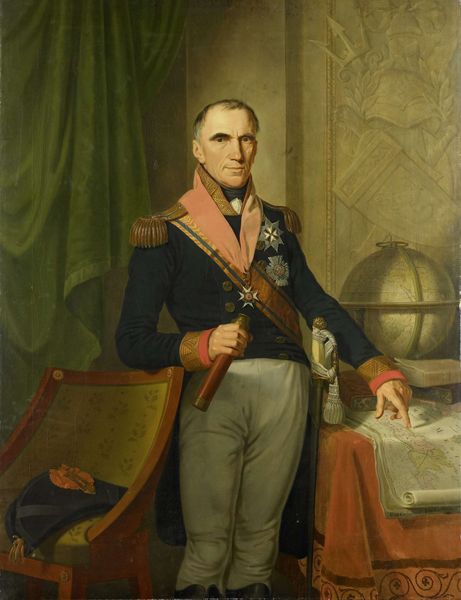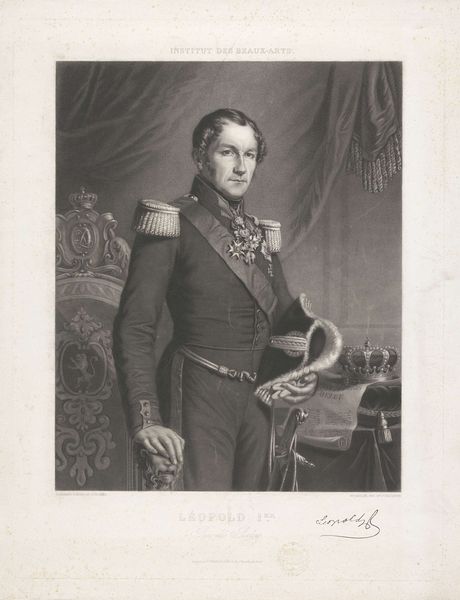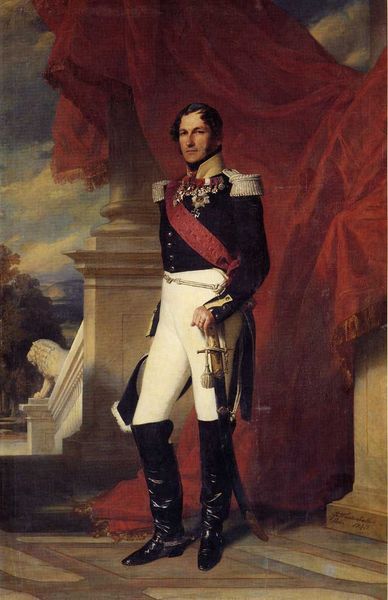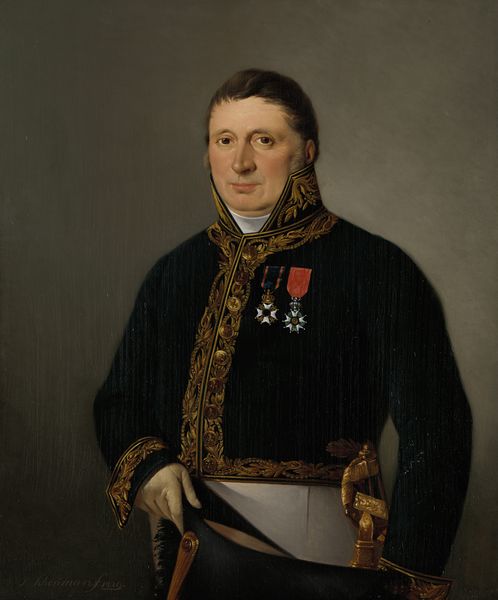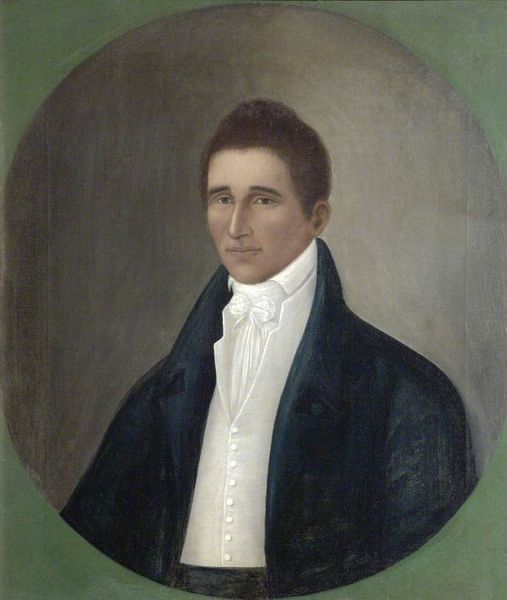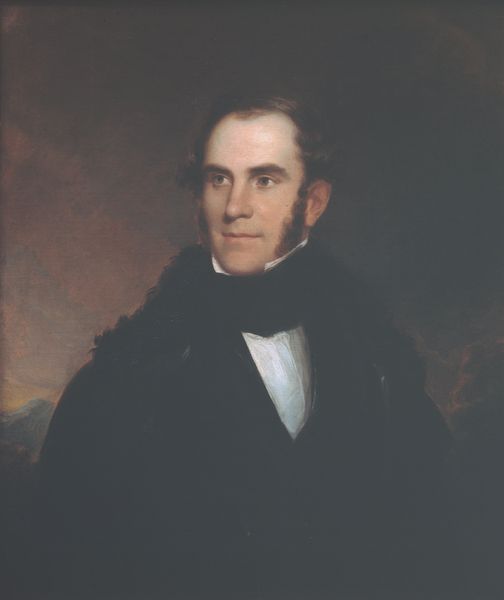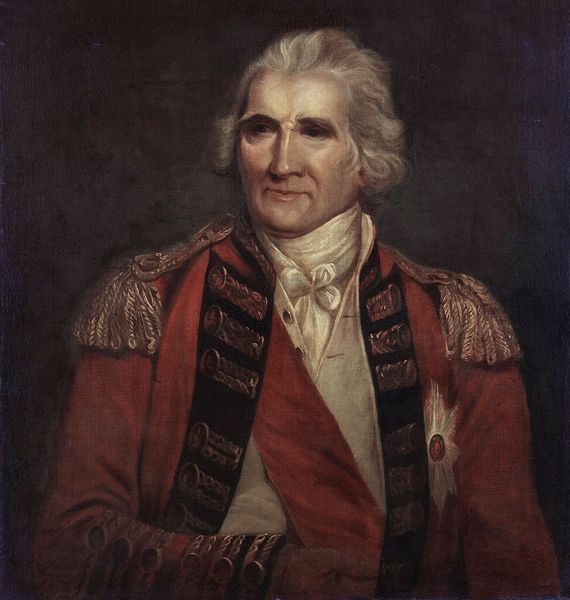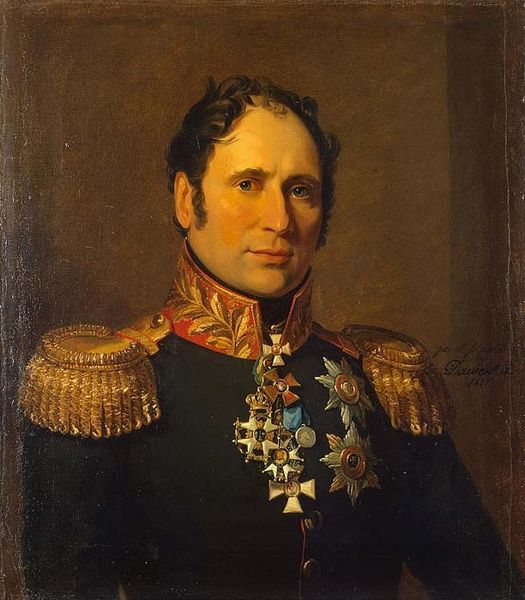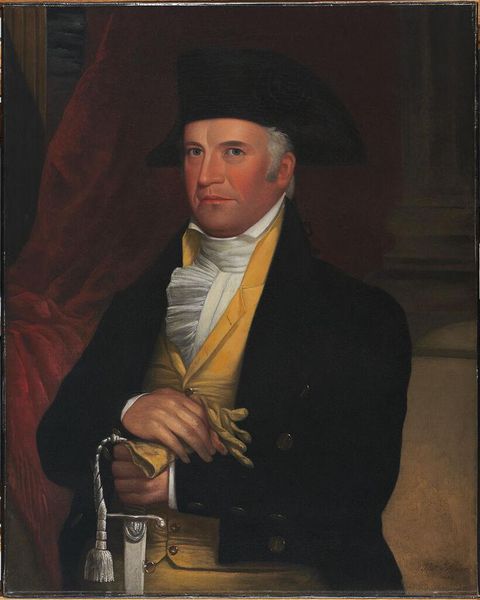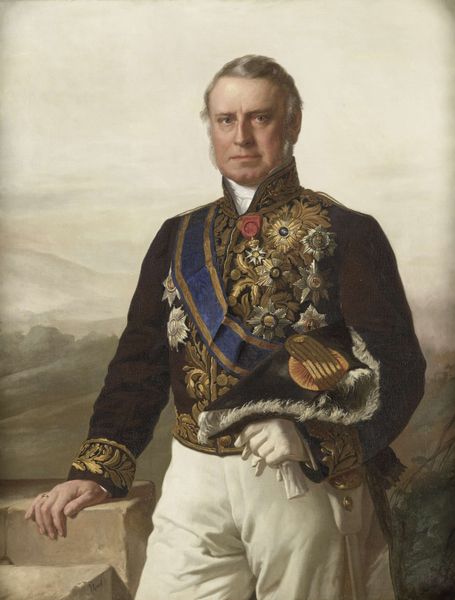
Copyright: Public Domain: Artvee
Editor: Here we have Henri Lehmann's "Portrait du baron Haussmann," painted in 1860 using oil. The baron looks powerful, assured. I'm curious, what stands out to you in this piece? Curator: Beyond the subject himself, consider the oil paint. Lehmann's use of it serves the desires of Haussmann and his class. Oil, as a commodity and luxury, allows for a durable and flattering depiction. Think of the control afforded here. Haussmann is actively participating in his own representation. Editor: So you’re saying that the material itself – oil paint – is intrinsically tied to the Baron's social standing? Curator: Precisely. And note how Lehmann manipulates the material to construct a particular image. Look at the detail rendered for the medals and awards, indicators of labour, merit, and social approval. This is a commodity serving to further elevate another. The consumption of this image becomes a means of social validation. Editor: That's a compelling point! I hadn't considered the role of the materials in reinforcing Haussmann’s power. Does the manufacturing of paint play any role in this social power too? Curator: Excellent question! Yes, pigments and production processes during that period often relied on exploitative labor practices. Therefore, in every stroke applied, traces of those social dynamics persist. The availability and affordability of certain pigments over others will direct the creation of wealth in its image. What appears merely decorative or expressive becomes a vehicle for complex, class-based hierarchies. Editor: I never would have thought about the means of production in such a detailed manner, thinking of pigment production impacting display. Thank you! Curator: My pleasure! Seeing art this way brings us closer to the full story of a work like this one.
Comments
No comments
Be the first to comment and join the conversation on the ultimate creative platform.
